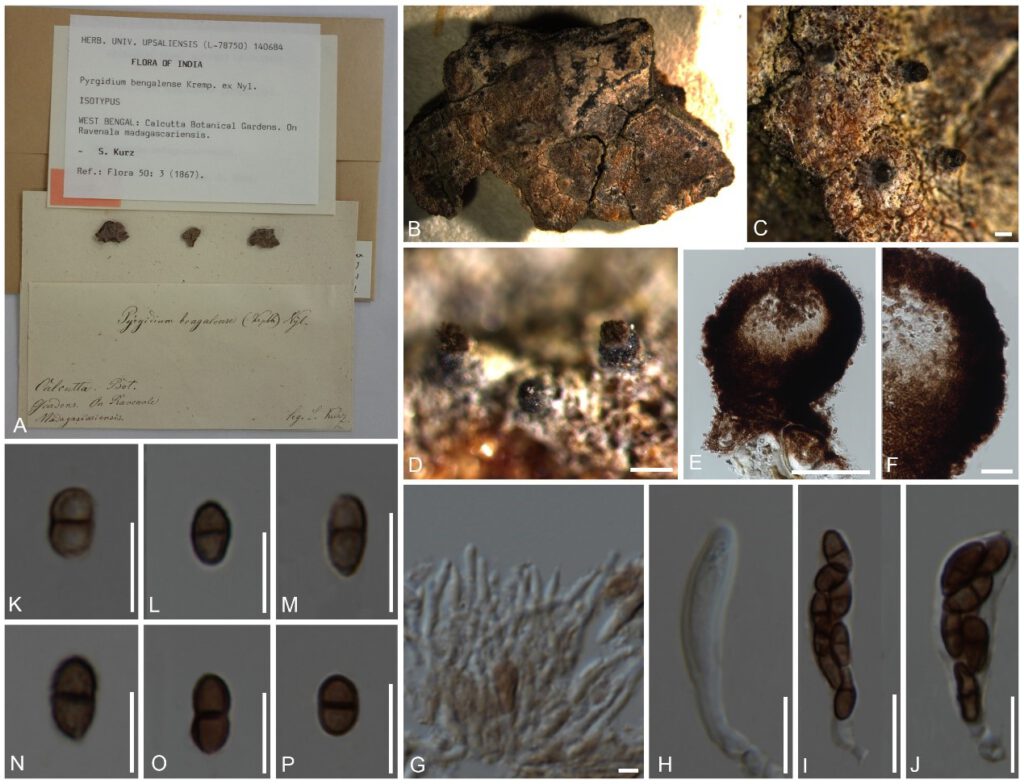Pyrgidium bengaliense Nyl., Flora, Regensburg 50: 3 (1867) (Fig. 2)
MycoBank number: MB 403559; Index Fungorum number: IF 403559; Facesoffungi number: FoF 10275;
Saprobic on bark. Thallus inconspicuous, pruinose around the ascomata. Prothallus absent. Photobiont absent. Sexual morph: Ascomata apothecial, 185–200 μm diam., 175–215 μm high, not stalked, mazaedioid, disc black, sessile, scattered, almost spherical. Excipulum 30–70 μm thick, brown to black, prosoplectenchymatous, comprised some sclerotized hyphae, thickened basally and gradually becoming thinner towards the upper. Mazaedium filling the cavity of the fruit-body and more or less projecting beyond the excipular edge. Paraphyses 1.2–1.8 μm thick, septate, branched. Asci 25–35 × 5.5–8.5 μm (x̄ = 30 × 7 μm, n = 30), cylindrical, 8-spored, unitunicate, tip blunted, not narrowing towards the apex, tholus lacking, apical apparatus inconspicuous, short pedicellate. Ascospores 5.3–8.5 × 3–4 μm (x̄ = 6.9 × 3.5 μm, n = 40), ellipsoidal, overlapping bi-seriate, light brown to brown, 0-1-septate, septum slightly dark brown, sometimes constricted at the septum, gattulates at immature, verrucose, irregular ridges longitudinally arranged (Fig. 6; G–J). Asexual morph: undetermined.
Material examined: India, Calcutta Botanic Gardens, on bark of Ravenala Madagascariensis, Kurz. S, (Kurz 1866, UPS-Isotype).

Figure 2. Pyrgidium bengaliense (Kurz 1866, Isotype) A–D, Ascomata on substrate. E Vertical section through Ascoma. F Vertical section through Exciple. G Paraphyses. H–J Asci. K–P Ascospores. Scale bars: B–E = 200 μm, F = 10 μm, G = 5 μm, H–P = 10 μm.
